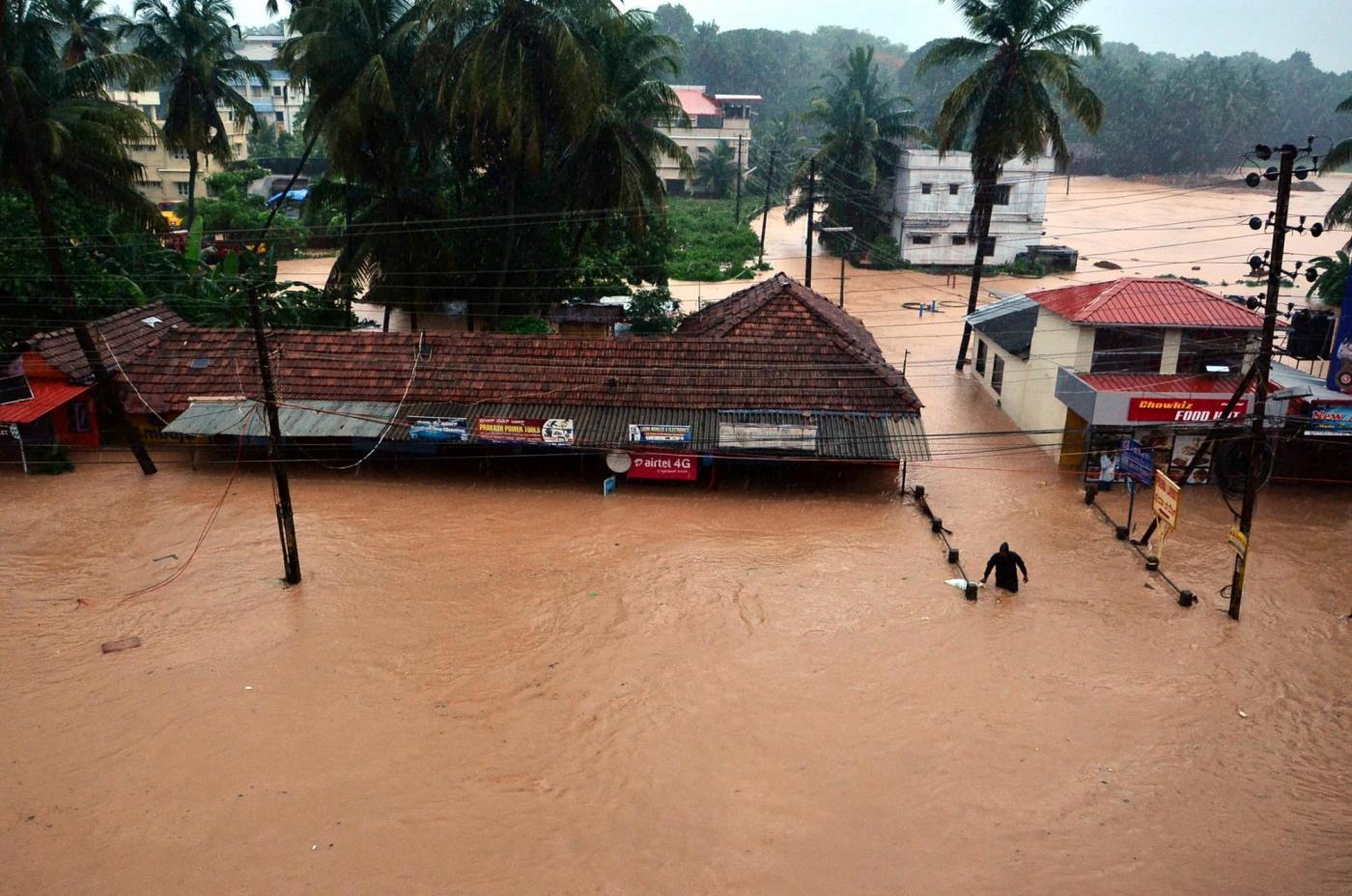Every year during the dry season between December and March, a dirty haze appears over South Asia and China. It is a potent mixture of pollutants borne out of wood burning and crop burning, vehicular emissions and industrial combustion, christened the Asian Brown Cloud…reports Asian Lite News
 It is a phenomenon that is too familiar to North India in the winter, thanks to the accompanying respiratory ailments, headaches and allergic reactions. Yet, come monsoon, the brown cloud disappears. What happens to the pollutants in the rainy season?
It is a phenomenon that is too familiar to North India in the winter, thanks to the accompanying respiratory ailments, headaches and allergic reactions. Yet, come monsoon, the brown cloud disappears. What happens to the pollutants in the rainy season?
A question that puzzled researchers for two decades has now been answered. Scientists from Germany and Cyprus have discovered that the Southwest Monsoon (also called the Indian Monsoon) cleanses a large chunk of pollutants that collect in the atmosphere. But it is not all benign — the monsoon also spreads pollution from South Asia, to other parts of the world.
Jos Lelieveld, the lead researcher and the head of the Max Planck Institute for Chemistry, Germany called the Indian monsoon, two-faced, likening it to Janus, the Roman god of duality, in his paper published in the journal Science.
Every year, at the end of the summer, dark clouds gather moisture from the Arabian Sea and the Bay of Bengal and move towards land. This is the approaching monsoon. But above this stormy layer, is an accompanying layer of cloud-free, clear atmosphere. This is called the anti-cyclone. Every monsoon comes with a larger layer of anti-cyclone.
While the monsoon air currents draw moisture inwards, building a dense layer of rain clouds, air currents in the anti-cyclone circulates outwards and spreads clouds and moisture over a large area. So, while the monsoon covers most of the sub-continent, its accompanying anticyclone covers a much larger area, extending from the Mediterranean Sea to the Pacific Ocean.
This is important, because the extent of coverage indicates how far anything caught up in these weather systems can spread.
Along with moisture, the Indian monsoon collects pollutants that have been sitting in the atmosphere throughout the dry season and pushes much of it higher up the atmosphere, into the anticyclone.
Lelieveld and his colleagues set out to find out what happened to these pollutants once they reached the anticyclone. The researchers travelled along the western part of the anticyclone, which is the sky between Cyprus and the Maldives, at an altitude between 9,000-15,000 metres above land.

For two months, the researchers measured an assortment of pollutants including Nitrogen, Sulphur and Hydrogen oxides in the anti-cyclone. It turns out the Indian monsoon pushed most of the pollutants away from our immediate atmosphere into the anticyclone.
A lot of these pollutants were then being neutralised, i.e. the toxic parts of the pollutants were being removed by chemicals that were naturally present in the anticyclone. What remained was then pushed back down towards the monsoon, where it was washed clean by rains.
Suvarna Fadnavis, an atmospheric scientist from the Indian Institute of Tropical Meteorology (IITM) in Pune, said that the study revealed important new findings. “Thus, the monsoon plays an important role in cleaning the atmosphere [of pollutants] (chemically processed and removed from the atmosphere),” she said.
Clearly, the Indian monsoon was important for more than just water. But what if the monsoon itself were threatened?
Studies have indicated that monsoon could be threatened by two major forces, both man-made. One is climate change and the other increasingly being investigated is aerosol pollution. Aerosols are any solid particles that have been compressed into a gas like state, helping them rise rapidly.
Vinoj V., an assistant professor at the Indian Institute of Technology (IIT) in Bhubaneshwar, pointed out that aerosol pollution, which has been increasing every year, could weaken the monsoon. “The hypothesis is that large amounts of aerosols over the monsoon domain especially the oceans will reduce the surface temperatures to the north of the Indian Ocean where most of these aerosols are present,” he said.
Aerosol particles could reduce the heat from the sun, cooling the oceans and reducing the amount of evaporation from the oceans. “This, in turn, is expected to reduce the moisture transport from the ocean in to the land. In such a situation, rainfall will reduce,” Vinoj explained.

However, these conclusions are not cut-and-dried according to both Fadnavis and Vinoj, who pointed out that there were several types of aerosols in the atmosphere and all their effects were not yet understood.
Whether aerosols or climate change, if the monsoon weakened, would it affect its ability to clean pollutants? “Yes,” said Lelieveld, adding simply that “the removal will become less efficient.”
Vinoj, however, felt that much would depend on the pattern of rain. “For example, continuous low intensity rainfall is more efficient in removing pollutants than a few episodes of high rainfall events,” he explained. “More rainfall over source regions may be more efficient in removing pollution than regions far from sources. So, it’s possible that pollutant concentrations will increase if rainfall decreases.”
Even if it remains strong, the study shows that we can’t depend solely on the monsoon to deal with our pollution woes. Pollutants that escaped the neutralising chemicals in the anticyclone, travelled even higher up the atmosphere, according to Lelieveld and his colleagues.
This is where the anticyclone’s spread matters. Remaining pollutants were pushed by the anticyclone’s outward bound currents and spread across the globe. Much of the leftover pollutants descended back into the breathable atmosphere over the Pacific Ocean near North America, Africa and the Mediterranean. Some even made it to the Poles.
Pollution is typically viewed as local problem, but this study seems to show that local emissions could have global impacts. While North America and Europe had reduced their levels of air pollution substantially, they could still be dealing with pollution from industries and coal burning in the developing nations of South Asia.
“With the understanding that air pollution is also related to climate on different spatio-temporal scales, it has truly become a global problem,” mused Vinoj. “Therefore, collective efforts by nations in solving the local pollution problems may have global and regional benefits in the long run”.








